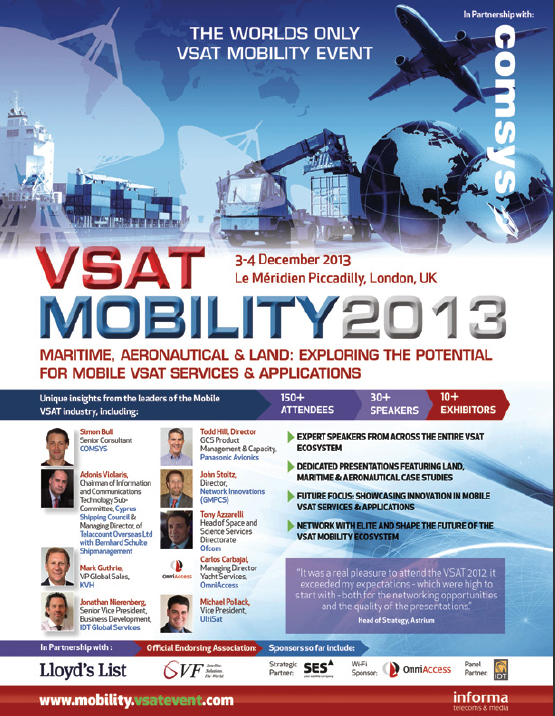Mr. Peterman leads the Government Systems segment that develops and produces network-centric IP-based secure fixed and mobile government communications systems, products, and services that enable collection and dissemination of secure, real-time digital information between command centers, communications nodes, and air defense systems. Mr. Peterman has more than 30 years of experience in systems engineering, strategic planning, portfolio management, and business leadership in the aerospace and defense industries.

From July 2012 to April 2013, Mr. Peterman served as president and CEO of SpyGlass Group, a company he co-founded that provides executive strategic advisory services to the aerospace and defense industries. From 2011 to July 2012, he served as president of Exelis Communications and Force Protection Systems, and from 2007 to 2011, he served as president of ITT Communications Systems, which are both developers and providers of command, control, communications, computers, intelligence, surveillance, and reconnaissance products and systems. Previously, Mr. Peterman was vice president and general manager of Rockwell Collins Government System Integrated C3 Systems and Rockwell Collins Displays and Awareness Systems. He earned a B.S.EE degree from Tri-State University (now Trine).
MilsatMagazine (MSM)
Mr. Peterman, thank you for taking the time to address our readership. How did you initially become interested in the communications and ISR market segments?
Ken Peterman
That is an interesting question as I have been involved in defense communications for more than 30 years, initially as a young satellite communications design engineer when I first worked with some of ViaSat’s founders. However, the communications and ISR markets are particularly exciting today.
As seen during OEF/OIF, DoD demand for SATCOM has grown from 2.3Gbps in March 2008 to 31.6Gbps in the summer of 2012—this is expected to continue for the foreseeable future as the technology supports enduring, global C4ISR mission requirements. To affordably meet this growing demand, DoD is earnestly looking for ways to adapt existing business practices and acquisition strategies to take advantage of the value of high-capacity commercial SATCOM capabilities, such as those at ViaSat. The focus is on the technology to deliver bits to the user as well as the quality and availability of those bits that are delivered.
MSM
What prompted your career move to ViaSat from your position as CEO at the SpyGlass Group?
Ken Peterman
ViaSat has one of the most innovative and creative cultures I’ve ever seen and the company can truly present a superb growth story. I have many friends and colleagues who work here and I have maintained close relationships with them. Now, with our Government Systems segment continuing to gain momentum, this is a particularly interesting time to join the ViaSat team.
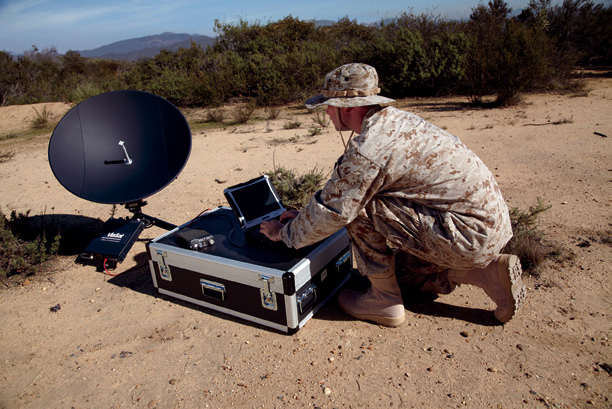
Pictured: The ViaSat KG-250X HAIPE™ IP Network Encryptor
There’s fast growth in other areas of the company, as well, and those elements also helped prompt the need for my new role here. ViaSat also deepened leadership in a couple of our business segments at the same time I came onboard.
MSM
What are your goals as the G.M. of ViaSat’s Government Systems division? With $139 million increase in year-over-year revenues, will your division be further expanding its business influence into the private sector, such as first responders and state and local security components, to further drive revenues?
Ken Peterman
One of the first goals is to communicate what ViaSat can accomplish in support of DoD. We are no longer the small products company we used to be—we have the expertise and scale to take our place alongside other top tier prime contractors and can, and will, play an increasingly larger role in meeting DoD capability gaps in an affordable manner. Our unique culture of innovation plays a large role in pursuing that goal.
People are often surprised by the breadth of systems and services that ViaSat offers. We have a plethora of great ideas and highly talented people who can solve the toughest challenges brought before them. We have a unique way of looking at communication systems and have a track record of bringing new dimensions of value to our government customers that our competitors have difficulty in matching. We need to spread that word to the marketplace, and we are doing just that through a variety of channels.
As you mentioned in your question, one of those new product areas is our high-speed services for the enterprise. We’re already seeing success in targeting first responders, law enforcement, anti-piracy forces, and critical infrastructure providers, such as utilities, with our communication and cybersecurity systems and services.
MSM
The DoD continues to demand more and more satellite bandwidth, even as troop drawbacks occur across the globe—how can ViaSat assist in their ever-increasing appetite for more services and bandwidth?
Ken Peterman
There’s no doubt of the need for commercial SATCOM to help fill that need. We agree with the recommendations of the Defense Business Board in their recent report to the Secretary of Defense. The essence of those recommendations is; that they need COMSATCOM to meet their needs; that it makes more sense economically and in terms of development times; that the DoD is not using the opportunities now available in the marketplace; and that DoD can do a lot more to optimize its strategy and structure to take advantage of those opportunities to gain the performance and economic advantages in the commercial marketplace.
We’re experts in satellite technology and our mission is to constantly drive down the cost per bit of satellite bandwidth—that should be highly attractive to DoD in the current environment where the need for more bandwidth is steadily increasing, all the while defense budgets are not. We can show them demonstrations of these new capabilities today with ViaSat-1. Plus, we can work with the agency to either lease available capacity or build new, similarly optimized satellites dedicated to DoD needs.
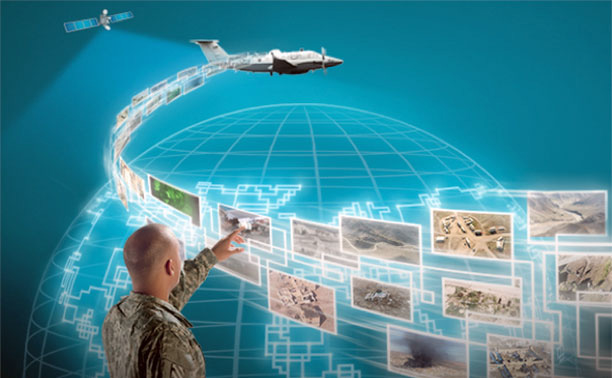
MSM
In your opinion, what new technologies and services within COMSATCOM will benefit military, agency, and government (MAG) organizations?
Ken Peterman
Advances in commercial, high-capacity satellite (HCS) technologies and business models are effectively optimizing total system life cycle costs by focusing on the end-to-end value proposition and these same advances hold significant benefits for MAG organizations. HCS has already dramatically increased the COMSATCOM supply (measured in bits of capacity and coverage footprint), and reduced the capital cost of COMSATCOM capacity by over 100-fold over the past several years. This is remarkable and timely from a defense communications and ISR market perspective.
MSM
What role will mobile SATCOM play in ViaSat’s offerings? Is COTP (Communication-On-The-Pause) being replaced by COTM (Communication-On-The-Move)? What technologies or products can ViaSat offer to aid in this move for critical mobile and transportable communications?
Ken Peterman
In addition to the cost-efficiency of HCS bandwidth, our technology enables terminals to be reduced in size and cost as well. We have a new portable terminal that packs inside a standard suitcase, at less than 50 pounds, and the unit can easily be checked in on a commercial flight. In a commercial environment, terminals also need to be easy to set up by nontechnical personnel. Think of the benefits for first responders, or even today’s more dispersed military forces—they can more easily transport this gear, set it up in minutes, and have a high-speed broadband connection virtually anywhere.
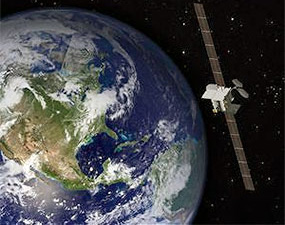
Artistic rendition of the ViaSat-2 satellite.
Just about any recent crisis situation you can name—super storm Sandy, the Colorado floods, the plant explosion in Texas, wildfires in California—has had one or more relief organization on the ground within days, using our new HCS services to provide emergency communications in support of their relief mission.
This year, you’ll also see a new HCS in-flight broadband system, Exede In The Air, start operations for JetBlue. This technology represents a new way to provide in-flight connectivity. Instead of one bucket of bandwidth that everyone on the plane must share, Exede In The Air establishes a dedicated 12Mbps service to each passenger. That type of mobile service translates directly to Command and Control (C2) or VIP aircraft.
It’s surprising how poor the service is aboard some of our most important military planes today. However, this capability, enabled by HCS, can turn that amenity around and give personnel high-speed connections similar to what is available to them on the ground. This is an enormous game-changer in terms of affordable capability.
MSM
What advantages/disadvantages are there to high throughput satellite (HTS) technology? What would be the recommended path for the DoD to follow in order to take advantage of HTS? What role will ViaSat play within the HTS environment?
Ken Peterman
The biggest advantage of HTS, or HCS as we refer to it, is the low cost per bit. Traditional Ku-band can cost around $225 million per Gbps of throughput, while our HCS system cuts that to about $3.5 million/Gbps—an order of magnitude improvement in terms of savings. A secondary benefit from such a large reservoir of bandwidth is the resiliency and redundancy so gained. The pipes are bigger and also provide resiliency and security.
One often cited disadvantage is that the systems are “closed.” In other words, you have to use a single vendor for space assets and ground systems. We don’t see it that way. We look at satellite networks as complete eco-systems. Some of the improvements we are incorporating into these satellites would offer capabilities that are currently impossible to use, given the current state of ground networking equipment.
There are also recent examples of the DoD having a satellite launched, but with no compatible ground terminals for usable connectivity. That means capital costs are sitting on orbit with no way for users to benefit from those assets. We believe in optimizing capital investment and network performance when both space and ground systems are worked on in parallel—the entire system is optimized and ready to operate from day one of the satellite’s commissioning.
For the government, the advantage of that whole-system approach is that an end-to-end acquisition strategy is facilitated, one that can be consolidated under a single service program office, and that yields a synchronized, cost-effective, rapidly fielded capability.
MSM
Would these new satellite assets be DoD owned, or leased from satellite operators such as ViaSat?
Ken Peterman
First and foremost, we believe that DoD must be extremely attentive to the attributes of the commercial satellite selected and its specific performance characteristics to maximize the agency’s associated return on space capital investment. That is absolutely vital. Further, that point differentiates our position from much of the rest of the industry on this important Pathfinder COMSATCOM initiative. Then, where COMSATCOM services are available, the DoD should lease that capacity.
However, commercial technologies advance so rapidly that lease periods must be established that are short enough in tenure to enable the DoD to readily transition to more advanced and economical commercial bandwidth as such becomes available. Where there is no COMSATCOM geographical coverage, DoD should replicate best commercial technologies. This could be accomplished by acquiring “clones” of proven, commercial HCS systems that maximize their return on space capital investment and position them on orbit to provide the DoD required capacity where it’s geographically needed.
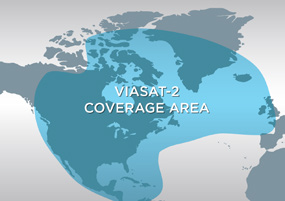
MSM
Do you see a growing need for smaller satellites (i.e., nano, pico, micro and so on) as assets for MAG related communications and ISR needs? (If the answer is in a positive vein, the following question is appropriate)—Given their ability to be part of a multiple payload, their time to launch and cost reduction factors, how will ViaSat take advantage of their capabilities?
Ken Peterman
ViaSat is actively engaged in exploring these smaller alternatives and much of our commercial and defense technologies are readily applicable to these markets. We think that they have applicability to certain special missions and operational scenarios and, where appropriate, we are engaged in that.
MSM
What is the new DoD acquisition process and are you gaining traction with these procedures? Does timeliness to market remain a major issue? How are cost factors being ameliorated for all involved parties?
Ken Peterman
We’re making progress. The Defense Business Board study cited earlier is just one example. Another is the DISA Pathfinder RFI issued earlier this year. I want to emphasize that the DoD hasn’t done anything “wrong” in the past—it’s just that commercial technologies have advanced to the point where they now can take advantage of a different way of doing business. The commercial norm is about three years from design to inserting a satellite on orbit, while the DoD historically takes about seven years to accomplish the same mission. There was a time when the DoD used to build their own cell networks and computers, as well, but they would never do that today.
The DoD is now beginning to understand that commercial satellite technology has reached the same point in its development: Commercial companies can do it faster and cheaper and also provide far better state-of-the-art technology that can be readily applied to meet DoD requirements such as security, resiliency, anti-jam, and so on.
MSM
Given your more than 30 years of experience, when you look back over your career, what project(s) or mission(s) that you’ve been involved in bring you the most sense of satisfaction?
Ken Peterman
I have many good friends in the communications and ISR market segments, in industry and government, and I have really enjoyed partnering together with them to address the many challenging problems that we face. Many times in my career, we have worked together to construct teaming, partnering, and joint venture relationships to better enable us to solve large complex challenges in the U.S. and global markets—including satellite communication programs, terrestrial line-of-sight communication programs, and security and counter-IED programs.
Through these partnering relationships, with both industry and government, we have successfully addressed customer requirements, filled capability gaps, overcome market challenges and created enduring friendships that together have been some of the most rewarding experiences of my career.
More info: http://www.viasat.com


